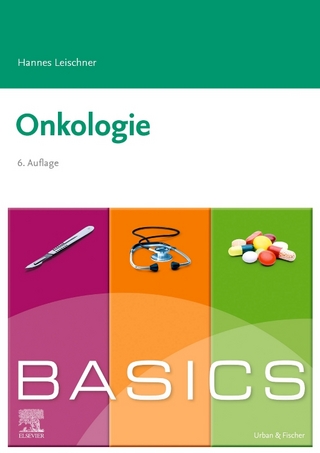
MicroRNA in Human Malignancies
Academic Press Inc (Verlag)
978-0-12-822287-4 (ISBN)
Massimo Negrini is an associate professor in Oncology at the University of Ferrara, where he teaches Molecular Oncology in different graduate and post-graduate programs. He is also director of the Specialization School in Oncology at the University of Ferrara and a biologist executive at the Hospital of Ferrara. He is editor-in-chief of the journal High-Throughput, an international, open access biomedical journal focused on the use of high-throughput technologies (microarray, NGS and other) and serves on the editorial boards of several other international biomedical journals focused on nucleic acids investigation. Prof. Negrini has co-authored more than 248 papers in international peer-reviewed journals. George A. Calin received both his M.D. and Ph.D. degrees at Carol Davila University of Medicine in Bucharest, Romania. Since 2007, he has run an independent research group at the M. D. Anderson Cancer Center in Houston and produced a new advance by linking new classes of non-coding RNAs to cancer. He is presently a Professor in Experimental Therapeutics at MDACC and studies the roles of microRNAs (miRNAs) and other non-coding RNAs in cancer initiation and progression and in immune disorders, as well as the mechanisms of cancer predisposition linked to ncRNAs. Furthermore, he explores the roles of body fluids miRNAs as potential hormones and biomarkers, as well as new RNA therapeutic options for cancer patients. He has co-authored more than 400 papers and over 20 book chapters Carlo M. Croce received his B.S. and M.D. degrees from University of Rome. In 1991, Dr. Croce was recruited as director of Kimmel Cancer Institute/Kimmel Cancer Center, Thomas Jefferson University. From 2004-2018, Dr. Croce served as John W. Wolfe Chair in Human Cancer Genetics, Chairman of the Department of Molecular Virology, Immunology and Medical Genetics, and Director of the Institute of Genetics, The Ohio State University (OSU). He is currently professor with the Department of Cancer Biology and Genetics at OSU. He has published more than 1,000 papers in international journals including Science, Nature, Cell, New Engl J Med, JAMA, and Cancer Cell. His research has yielded 62 issued U.S. patents. Dr. Croce is a member of the American Academy of Arts and Sciences, the American Association for the Advancement of Science, The National Academy of Sciences, the Institute of Medicine, and AACR Academy.
SECTION 1: miRNAs involvement in basic mechanisms of cancer development 1. Overview on miRNA classification, biogenesis, and functions 2. microRNA in cancer: overview 3. miR-15/16 in human malignancies 4. microRNAs and TP53 regulation 5. microRNAs involvement in Invasion and metastasis 6. microRNAs and metabolism 7. microRNAs in inflammation processes
SECTION 2: miRNAs methodologies 8. Wet-lab methods for miRNA analysis 9. Bioinformatics utilities, web resources and integrative strategies for the analysis of miRNA regulatory networks 10. Computational Resources for Analysis of miRNA Targetome 11. miRNA bioinformatics and pathway analysis
SECTION 3: miRNAs involvement in therapeutics / theranostics 12. Opportunities of miRNAs in cancer therapeutics
SECTION 4: miRNAs involvement in human cancer: pathophysiology and translational opportunities 13. Pathophysiology roles and translational opportunities of miRNAs in acute leukemias 14. Pathophysiology roles and translational opportunities of miRNAs in CLL 15. Pathophysiology roles and translational opportunities of miRNAs in Lymphoma 16. Pathophysiology roles and translational opportunities of miRNAs in Breast cancer 17. Pathophysiology roles and translational opportunities of miRNAs in colorectal cancer 18. Pathophysiology roles and translational opportunities of miRNAs in Lung cancer 19. Pathophysiology roles and translational opportunities of miRNAs in Mesothelioma 20. Pathophysiology roles and translational opportunities of miRNAs in Renal cancer 21. Pathophysiology roles and translational opportunities of miRNAs in Pancreatic cancer 22. Pathophysiology roles and translational opportunities of miRNAs in Prostate cancer 23. Pathophysiology roles and translational opportunities of miRNAs in Hepatocarcinoma 24. Pathophysiology roles and translational opportunities of miRNAs in Ovarian cancer 25. Pathophysiology roles and translational opportunities of miRNAs in Bladder cancer 26. Pathophysiology roles and translational opportunities of miRNAs in Cutaneous Melanoma 27. Pathophysiology roles and translational opportunities of miRNAs in Brain tumors 28. Pathophysiology roles and translational opportunities of miRNAs in Sarcomas
| Erscheinungsdatum | 09.03.2022 |
|---|---|
| Zusatzinfo | 155 illustrations (30 in full color); Illustrations |
| Verlagsort | San Diego |
| Sprache | englisch |
| Maße | 216 x 276 mm |
| Gewicht | 1220 g |
| Themenwelt | Medizin / Pharmazie ► Medizinische Fachgebiete ► Onkologie |
| Naturwissenschaften ► Biologie ► Genetik / Molekularbiologie | |
| ISBN-10 | 0-12-822287-5 / 0128222875 |
| ISBN-13 | 978-0-12-822287-4 / 9780128222874 |
| Zustand | Neuware |
| Haben Sie eine Frage zum Produkt? |
aus dem Bereich


